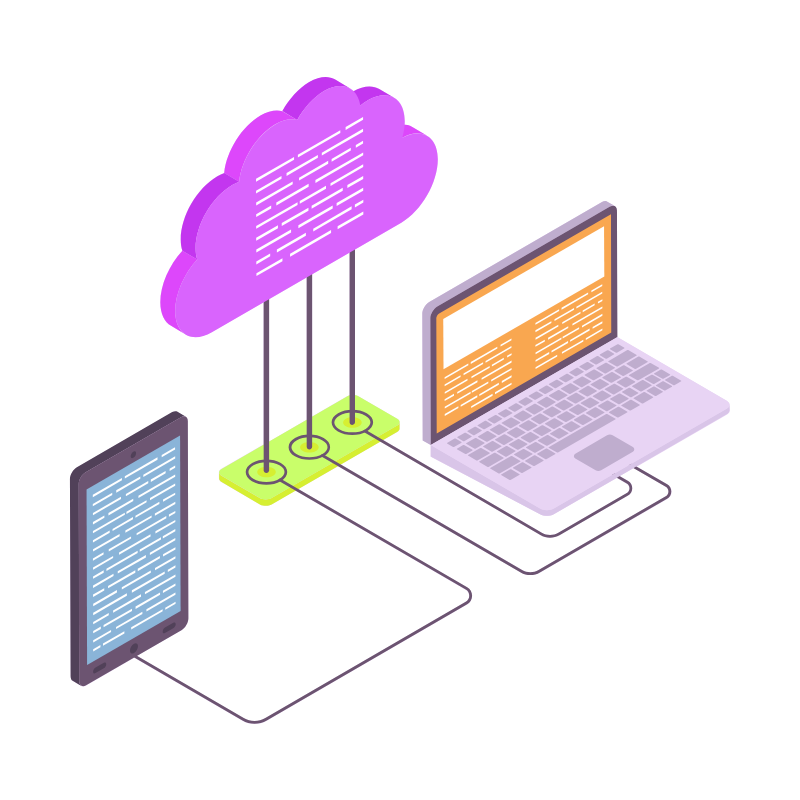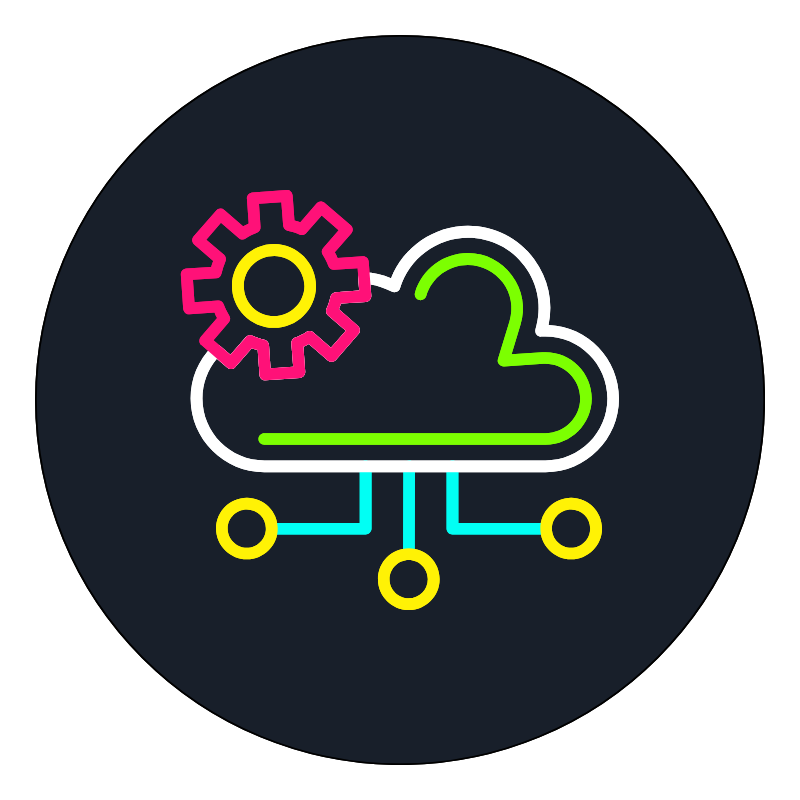So, you want to start an online coffee business in the Philippines?
You’re in luck!
This ultimate guide will take you through everything you need to know about starting and running a successful coffee shop business in the comfort of your own home.
With the right planning, dedication, and passion for coffee, you can turn your dream into a thriving online enterprise.
So, let’s get brewing and explore the steps to building your online coffee shop empire!
Why Start an Online Coffee Business in the Philippines?

The Philippines is a nation of coffee lovers, with a rich history and culture centered around this beloved beverage.
The demand for coffee in the country is high, and it continues to grow, making it an ideal market for aspiring coffee entrepreneurs.
Starting an online coffee business in the Philippines offers several advantages:
- Lower Overhead Costs: Compared to a traditional brick-and-mortar coffee shop, an online business model can significantly reduce your overhead expenses. You don’t need to rent a physical store or cafe, purchase expensive furniture and decor, or hire a large staff. This makes starting and maintaining your business more financially feasible and accessible.
- Wider Reach: With an online coffee business, you can potentially reach customers across the Philippines and even beyond. You are not limited by geographical boundaries, allowing you to tap into a larger market and increase your customer base.
- Flexibility and Convenience: Running an online business provides you with the flexibility to work from home or any location of your choice. This is especially beneficial if you have other commitments or prefer a more flexible work schedule. You can manage your business at your own pace and convenience.
- Lower Barrier to Entry: Starting an online coffee business often requires less capital and resources compared to a physical coffee shop. This makes it a more feasible option for aspiring entrepreneurs who may have limited funds or want to test the waters before making a larger investment.
Understanding the Coffee Industry in the Philippines

Before diving into the world of online coffee business in the Philippines, it’s crucial to grasp the dynamics of the local coffee industry.
The Philippines has a rich history with coffee, dating back to the 18th century when it was introduced during the Spanish colonial era.
In fact, the Philippines is the 14th largest coffee producer globally, with a focus on Arabica, Robusta, Excelsa, and Liberica varieties. The industry is expected to grow, with a significant gap between production and consumption.
The country’s favorable climate and volcanic soil make it ideal for growing coffee, and it was once a leading coffee producer.
However, the industry faced setbacks due to coffee rust and other challenges.
In recent years, there has been a renewed interest in revitalizing the Philippine coffee industry. The government, along with various stakeholders, has been working to boost coffee production and improve its quality.
The Philippine Coffee Industry Roadmap 2017-2022 outlines strategies to achieve this goal, focusing on increasing production, improving quality, and promoting local consumption.
Here are some key aspects of the coffee industry in the Philippines:
- Production: The Philippines produces four main varieties of coffee: Arabica, Robusta, Liberica (Barako), and Excelsa. Robusta is the most widely grown variety, while Arabica is sought after for its quality and flavor.
- Challenges: The industry faces challenges such as low productivity, aging coffee trees, limited access to financing and technology, and competition from imports.
- Opportunities: There are also opportunities for growth, including increasing demand for specialty coffee, growing interest in local and sustainable coffee, and government support for the industry.
- Consumption: Local coffee consumption is increasing, driven by the growing cafe culture and rising disposable incomes.
Overall, the Philippine coffee industry is at a turning point, with efforts underway to revitalize the sector and position it for future growth.
While challenges remain, the potential for the industry is significant, and with continued support and investment, the Philippines could once again become a major player in the global coffee market.
Top 5 Coffee Companies in the Philippines
There are several ways to determine the “top” coffee companies in the Philippines, depending on whether you’re looking at market share, popularity, or quality. Here are some contenders, based on a combination of those factors:
- Nescafé: A global brand owned by Nestle, Nescafé is a dominant player in the Philippine instant coffee market. It offers a wide range of products, catering to different tastes and budgets.
- Kopiko: Another popular brand known for its instant coffee products, Kopiko is particularly recognized for its sweet and creamy coffee blends.
- San Miguel Coffee: Produced by San Miguel Corporation, a major conglomerate in the Philippines, San Miguel Coffee offers a variety of coffee products, including instant, roasted beans, and 3-in-1 mixes.
- Hills & Valleys Coffee: Considered one of the best coffee brands in the Philippines, Hills & Valleys focuses on premium coffee offerings and unique flavors, using high-quality beans and meticulous roasting processes.
- Good Cup Coffee Co.: A specialty coffee roaster known for its commitment to quality and ethical sourcing, Good Cup works closely with local farmers and offers a curated selection of single-origin and blended coffees.
Please note that this list is not exhaustive, and there are many other notable coffee brands and roasters in the Philippines. The coffee scene is constantly evolving, with new players emerging and established brands innovating.
For further information, you can check out these resources:
- Top 10 Coffee Brands in the Philippines: https://top.org.ph/fast-moving-consumer-goods/coffee-brands/
- Best Coffee Shops in the Philippines You Must Try (2024 Top List): https://hillsandvalleys.ph/best-coffee-shops-in-the-philippines/
Building Your Coffee Business Foundation in the Philippines

Now that you understand the landscape of the coffee industry in the Philippines, it’s time to lay the groundwork for your online coffee business.
This section will guide you through the fundamental steps of starting any business, ensuring you have a solid foundation for success.
Choose Your Coffee Niche
The coffee industry is vast, and trying to cater to everyone’s tastes can be challenging. Instead, focus on finding your niche—a specific segment of the market that you can cater to exceptionally well. Here are some ideas to consider:
- Specialty Coffee: With the growing appreciation for artisanal coffee in the Philippines, you can focus on sourcing and roasting specialty-grade coffee beans. Offer unique single-origin beans, experiment with different roasting profiles, and educate your customers about the nuances of coffee flavors and origins.
- Local Coffee Sourcing: Showcase the best of Filipino coffee by partnering with local coffee farmers and cooperatives. Promote sustainability, fair trade practices, and the unique flavor profiles of locally grown coffee beans. This niche can attract customers who are passionate about supporting local businesses and experiencing the diverse tastes of the Philippines.
- Coffee Drinks and Innovations: If you’re passionate about creating unique coffee drinks and experiences, focus on crafting innovative coffee-based beverages. Experiment with different brewing methods, flavors, and presentations to create a menu that excites coffee enthusiasts and becomes your signature offering.
- Education and Community: Build a community around your online coffee business by positioning yourself as a coffee educator. Share your knowledge about different coffee beans, brewing techniques, and the art of coffee appreciation. Host online workshops, create how-to videos, and engage with your customers to foster a sense of belonging and loyalty.
Create a Business Plan
A well-thought-out business plan is your roadmap to success. It helps you define your goals, strategies, and tactics for building a thriving online coffee business. Here are the key components of a solid business plan:
- Executive Summary: Start with a concise overview of your business concept, target market, and unique selling proposition. Summarize the key points of your business plan to give readers a clear understanding of your coffee business in the Philippines.
- Market Analysis: Demonstrate your understanding of the coffee industry in the Philippines and your target market. Include statistics, trends, and insights into consumer behavior and preferences. Identify your potential customers and analyze your competitors to find gaps in the market where your business can excel.
- Products and Services: Describe the coffee products and services you plan to offer. Be specific about the types of coffee beans, brewing methods, and any additional items like coffee mugs, grinders, or accessories you intend to sell. Outline your sourcing and supply chain strategy, highlighting any unique relationships or advantages you have in the market.
- Marketing and Sales Strategy: Outline your plan for attracting customers and generating sales. Detail your online marketing approach, including social media platforms, content creation, and advertising strategies. Discuss your pricing strategy, sales channels, and any partnerships or promotions you intend to pursue.
- Operations Plan: Explain how you will run your online coffee business on a day-to-day basis. Include information about inventory management, order fulfillment, customer service, and any technology or software you will use to streamline your operations.
- Financial Projections: Provide a realistic financial overview of your business, including startup costs, projected revenue, and expenses. Create a budget and cash flow forecast to demonstrate the viability and potential profitability of your online coffee shop business.
Name Your Coffee Brand
Choosing a memorable and relevant name for your online coffee business is crucial for building a strong brand. Here are some tips to consider:
- Keep it Relevant: Your business name should reflect the nature of your coffee business. It could be playful, sophisticated, or quirky, but it should always convey a connection to coffee.
- Make it Memorable: Opt for a name that is easy to remember and pronounce. Avoid complicated or overly long names that might confuse customers or be challenging to recall. A catchy and unique name can go a long way in building brand recognition.
- Check Availability: Before finalizing your business name, ensure that the corresponding domain name and social media handles are available. You want to ensure a consistent online presence across platforms, so your customers can easily find and engage with your brand.
- Consider SEO: While not mandatory, incorporating keywords related to coffee or your niche can help with search engine optimization (SEO). This can improve your online visibility and make it easier for potential customers to discover your business when searching for coffee-related terms.
Choose Your Business Model
There are a few different business models you can consider for your online coffee shop in the Philippines. Each has its own set of advantages and considerations:
- Online Coffee Store: This model involves setting up an e-commerce website where customers can browse and purchase your coffee products directly. You handle inventory management, order fulfillment, and shipping. This option provides you with more control over the customer experience and allows you to build a direct relationship with your clientele.
- Subscription Service: If you want to ensure a steady stream of customers and income, consider offering a subscription service. Customers sign up for regular deliveries of freshly roasted coffee beans or curated coffee packages. This model provides predictability and can help you manage inventory and cash flow more effectively.
- Mobile Coffee Shop: If you want the flexibility to attend events and engage directly with customers, a mobile coffee shop could be ideal. You can set up a coffee cart or van and travel to different locations, serving coffee and creating a unique experience for your patrons. This model combines the benefits of online sales with the personal touch of a physical coffee shop.
- Coffee Retailers and Partnerships: Another option is to focus on wholesale and partnership opportunities. You can supply your coffee products to existing coffee shops, restaurants, or retailers. This model may require less direct interaction with end consumers, but it can provide a steady source of revenue and help build your brand presence.
Find Reliable Suppliers
Sourcing high-quality coffee beans and related products is critical to the success of your online coffee business. Here are some tips for finding reliable suppliers:
- Research and Compare: Conduct thorough research to identify potential suppliers of coffee beans, brewing equipment, and any other products you intend to sell. Compare their offerings, pricing, and reputation in the industry. Look for suppliers who are reputable, consistent, and aligned with your business values.
- Sample and Test: Before committing to a supplier, request samples of their coffee beans or products. Taste-test the coffee yourself and, if possible, gather feedback from a panel of trusted coffee enthusiasts or industry professionals. This will ensure that you’re offering your customers only the best quality.
- Build Relationships: Cultivate strong relationships with your suppliers. Communicate your needs, expectations, and long-term goals. A good supplier should be responsive, reliable, and willing to work collaboratively to ensure a steady supply of high-quality products.
- Consider Logistics: Discuss shipping and delivery options with potential suppliers. Ensure they can meet your timelines and provide efficient and cost-effective logistics solutions. Reliable and timely delivery is essential for maintaining a positive customer experience.
Building Your Online Presence

In the digital age, your online presence is crucial for the success of your coffee business. This section will guide you through the process of creating a compelling website, utilizing social media, and implementing effective marketing strategies to reach and engage your target audience.
Create a User-Friendly Website
Your website is the digital face of your online coffee business. It’s where customers will go to learn about your brand, browse your products, and make purchases. Here’s how to create a user-friendly and engaging website:
- Choose a Platform: Select a user-friendly and flexible e-commerce platform that allows you to design and manage your online store with ease. Popular options include Shopify, WooCommerce, and BigCommerce. These platforms offer templates and customizable features to create a professional-looking website.
- Design and Navigation: Opt for a clean and intuitive website design that reflects your brand identity. Ensure your website is easy to navigate, with clear categories, product descriptions, and high-quality images. Make it simple for customers to find the information they need and complete their purchases seamlessly.
- Product Pages: Create detailed and engaging product pages for each of your coffee offerings. Include descriptions that highlight the unique attributes of the coffee, such as origin, flavor notes, and roasting profile. Use attractive imagery and, if possible, include video content to showcase your products in the best light.
- Optimize for SEO: Implement SEO best practices to improve your website’s visibility on search engines. Conduct keyword research and incorporate relevant terms naturally into your content. Optimize your website’s metadata, including page titles, meta descriptions, and image alt tags. This will help potential customers find your online coffee shop more easily.
Leverage Social Media
Social media platforms are powerful tools for engaging with your target audience and building a community around your coffee brand. Here’s how to make the most of social media:
- Choose the Right Platforms: Identify the social media platforms that align with your target audience and business goals. For example, Instagram and Facebook are excellent for visual content and building a community, while Twitter can be great for real-time engagement and customer service. LinkedIn could be useful for networking and connecting with industry professionals.
- Create Engaging Content: Share a mix of content that showcases your coffee products, educates your audience, and invites interaction. Post high-quality images, videos, and stories that highlight your coffee beans, brewing methods, and the people behind your brand. Engage with your followers through polls, contests, and interactive features to build a loyal community.
- Use Hashtags Strategically: Hashtags can help expand your reach and connect with new audiences. Research and use relevant hashtags related to coffee, your specific niche, and the Philippines. Create unique hashtags for your brand and any campaigns or promotions you run to encourage user-generated content and build momentum.
- Respond to Customers: Social media is a powerful customer service tool. Respond promptly to comments, messages, and reviews, whether they are positive or negative. Address any concerns or queries in a friendly and professional manner, demonstrating your commitment to customer satisfaction.
Implement Marketing Strategies
To cut through the noise and reach your target audience effectively, consider implementing these marketing strategies:
- Content Marketing: Create valuable and engaging content beyond social media posts. This could include blog articles, videos, or podcasts that educate, entertain, or inspire your audience. Share your expertise, tell stories, and provide solutions to your customers’ problems or queries. Content marketing can help establish your brand as a trusted authority in the coffee space.
- Email Marketing: Build an email list and send targeted newsletters or promotional emails to your subscribers. Offer incentives, such as discounts or exclusive content, to encourage sign-ups. Use email marketing to nurture relationships, announce new products, and drive repeat business.
- Influencer Partnerships: Collaborate with influencers or micro-influencers in the coffee industry or lifestyle niches relevant to your target audience. Their endorsements and reviews can help expand your reach and build trust with potential customers.
- Local Community Engagement: Partner with local businesses, attend coffee-related events, or sponsor community initiatives to raise awareness of your brand. These activities can help establish your presence and build relationships with potential customers and industry peers.
Online Coffee Business Operations and Logistics in the Philippines

Running a successful online coffee business in the Philippines involves managing the day-to-day operations and logistics effectively.
This section will guide you through important considerations such as inventory management, order fulfillment, and providing excellent customer service.
Manage Your Inventory
Efficient inventory management is crucial to ensuring you have the right products available when your customers need them. Here are some tips:
- Streamline Ordering: Implement a robust inventory management system to track your stock levels and automate reordering when quantities fall below a certain threshold. This will help prevent stockouts and ensure a consistent supply of products.
- Forecast Demand: Analyze sales data and trends to forecast demand and adjust your inventory levels accordingly. Consider seasonal fluctuations and promotional campaigns that may impact sales volume.
- Manage Freshness: Coffee beans have a limited shelf life, so it’s essential to manage your inventory to ensure freshness. Rotate your stock to sell the oldest beans first and set up a system to monitor the age of your coffee products.
Fulfill Orders Efficiently
Prompt and accurate order fulfillment is vital to keeping your customers happy and maintaining a positive brand reputation. Here’s how to do it well:
- Streamline Packaging and Shipping: Partner with a reliable shipping carrier and negotiate rates to optimize shipping costs. Offer multiple shipping options, such as standard and expedited delivery, to cater to different customer preferences. Ensure your packaging is sturdy and reflects your brand aesthetic.
- Set Clear Delivery Expectations: Be transparent about delivery timelines and provide tracking information to customers whenever possible. This helps set clear expectations and reduces inquiries about order status.
- Handle Returns Gracefully: Inevitably, there may be instances where customers need to return or exchange products. Establish a clear and customer-friendly return policy, and communicate it prominently on your website. Handle returns promptly and courteously to maintain positive relationships.
Provide Excellent Customer Service
Exceptional customer service can set your online coffee business apart and foster loyalty. Here’s how to deliver a great experience:
- Offer Multiple Contact Channels: Provide multiple avenues for customers to reach you, such as email, social media messaging, and live chat. Ensure prompt responses and maintain a friendly and helpful tone in all interactions.
- Prioritize Customer Satisfaction: Train your team to go above and beyond to resolve customer inquiries or complaints. Empower them to make decisions that prioritize customer satisfaction, even if it means bending the rules occasionally.
- Encourage Feedback: Soliciting feedback from your customers shows that you value their opinions and want to improve. Use feedback to identify areas for enhancement and make necessary adjustments to your products or services.
Growing Your Online Coffee Business in the Philippines

Once your online coffee business is up and running, it’s time to focus on growth and expansion.
This section will explore strategies for scaling your operations, diversifying your offerings, and establishing your brand as a leader in the coffee industry.
Diversify Your Product Range
Expanding your product range can attract new customers and increase your average order value. Here are some ideas to consider:
- Coffee Accessories: Offer a selection of coffee accessories such as grinders, French presses, pour-over setups, and stylish mugs. These add-on items can enhance your customers’ coffee experience and provide additional revenue streams.
- Subscription Boxes: Create curated subscription boxes with a variety of coffee beans or coffee-themed products. This not only generates recurring revenue but also provides an exciting unboxing experience for your customers.
- Coffee-Based Gifts: Target gift-givers by offering coffee-themed gift sets or customizable bundles. This can be especially popular during holidays or special occasions, providing an additional revenue stream.
Expand Your Marketing Efforts
To reach a wider audience and drive more traffic to your online coffee store, consider the following marketing tactics:
- Influencer Collaborations: Partner with influencers or micro-influencers in the coffee space or lifestyle niches that align with your target audience. Their endorsements and reviews can expose your brand to a whole new group of potential customers.
- Social Media Advertising: Utilize paid social media advertising to boost your reach and target specific demographics or interests. Platforms like Facebook and Instagram offer powerful advertising tools to help you get in front of the right people.
- Referral Programs: Implement a referral or loyalty program to encourage word-of-mouth marketing. Reward customers for referring friends or making repeat purchases. This can create a network of brand advocates who actively promote your online coffee business.
Focus on Customer Retention
Retaining existing customers is just as important as acquiring
new ones. Here are some strategies to prioritize customer retention:
- Personalized Communication: Segment your customer base and tailor your communication to each group. Send personalized emails, offer exclusive discounts, or provide early access to new products. Make your customers feel valued and appreciated.
- Loyalty Programs: Implement a loyalty program that rewards customers for their repeat purchases. Offer incentives such as discounts, freebies, or points that can be redeemed for future purchases. This encourages customers to keep coming back and builds a sense of loyalty.
- Engage on Social Media: Actively engage with your customers on social media platforms. Respond to their comments, messages, and reviews promptly and in a friendly manner. Show genuine interest in their coffee experiences and build meaningful connections.
- Follow-Up Surveys: Send follow-up surveys after a customer makes a purchase to gather feedback. Use this feedback to improve your products, services, and overall customer experience. Customers appreciate being heard and are more likely to remain loyal to a brand that values their opinions.
Continuously Improve and Innovate
To stay ahead in the competitive coffee industry, it’s essential to continuously improve and innovate. Here’s how:
- Stay Informed: Keep up with industry trends, emerging coffee brewing methods, and new flavor profiles. Attend coffee conferences, join online communities, and network with other coffee professionals to stay informed and inspired.
- Experiment with New Offerings: Regularly introduce new coffee beans, limited edition blends, or seasonal flavors to keep your menu fresh and exciting. Encourage customer feedback on these new offerings to gauge their popularity and make adjustments as needed.
- Seek Customer Input: Involve your customers in the decision-making process when introducing new products or making changes to your business. Conduct surveys or polls to gather their preferences and opinions. This not only makes customers feel valued but also increases the chances of successful product launches.
- Embrace Sustainability: Incorporate sustainable practices into your business. Source coffee beans from farms that prioritize environmental and social responsibility. Use eco-friendly packaging materials and promote recycling initiatives. Consumers are increasingly conscious of sustainability, and aligning your brand with these values can attract and retain customers.
Scale Your Operations
As your online coffee business grows, you may need to scale your operations to meet increasing demand. Here are some considerations:
- Automation: Implement technology and software solutions to automate repetitive tasks, such as inventory management, order processing, and customer support. This allows you to streamline operations and focus on strategic growth.
- Outsourcing: Consider outsourcing certain tasks, such as packaging and shipping, to third-party fulfillment centers. This can help you scale your operations without needing to invest in additional infrastructure or hire more staff.
- Collaborations and Partnerships: Explore collaborations with other coffee businesses, local cafes, or even non-coffee brands that align with your target audience. Joint marketing campaigns, cross-promotions, or co-branded products can expand your reach and attract new customers.
- Expand Distribution Channels: Look for opportunities to expand your distribution channels. This could include partnering with other online retailers, selling your products in local stores or cafes, or even exploring international markets. Diversifying your sales channels can increase your customer base and revenue streams.
Measure and Analyze Performance
Regularly monitor and analyze key performance indicators (KPIs) to assess the success of your online coffee business. Key metrics to track include:
- Sales and Revenue: Monitor your sales performance, revenue growth, and average order value. Identify trends and patterns to understand what products or strategies are driving the most revenue.
- Customer Acquisition and Retention: Track the number of new customers acquired and the rate at which you retain existing customers. Identify strategies that are most effective in attracting and retaining customers.
- Website Traffic and Conversion Rates: Analyze your website traffic, including the number of visitors, page views, and conversion rates. Identify high-performing pages and optimize underperforming ones to improve the overall user experience and increase conversion rates.
- Social Media Engagement: Monitor your social media engagement metrics, such as likes, comments, shares, and follower growth. Identify which types of content or campaigns generate the most engagement and adjust your social media strategy accordingly.
- Customer Feedback and Reviews: Pay close attention to customer feedback and reviews. Monitor both positive and negative feedback to identify areas for improvement and address any issues promptly.
Regularly analyzing these metrics allows you to make data-driven decisions and continuously optimize your online coffee business for growth and success.
Brewing Success in the Philippines’ Online Coffee Industry
Starting an online coffee business in the Philippines is an exciting endeavor that offers numerous opportunities for success.
You can build a thriving online coffee shop business by understanding the local coffee culture, choosing the right niche, and implementing effective marketing strategies.
Remember to focus on providing exceptional customer experiences, continuously improving and innovating, and staying informed about industry trends.
With dedication, passion, and a commitment to quality, your online coffee business can become a beloved brand in the Philippines’ coffee industry.
So, get ready to embark on this coffee-filled journey and start brewing success in the online coffee business in the Philippines!
Read also:
 Web HostingCost-effective shared hosting solutions
Web HostingCost-effective shared hosting solutions Reseller HostingStart your own hosting business without tech hustle
Reseller HostingStart your own hosting business without tech hustle Affiliate ProgramEarn commission by referring customers to our platforms
Affiliate ProgramEarn commission by referring customers to our platforms cPanel HostingHosting powered by cPanel (Mostly user friendly)
cPanel HostingHosting powered by cPanel (Mostly user friendly) Windows HostingOptimized for windows based-applications and sites
Windows HostingOptimized for windows based-applications and sites Domain SearchFind and register available domain names in seconds
Domain SearchFind and register available domain names in seconds All DomainsExplore and register domain extensions across the world
All DomainsExplore and register domain extensions across the world Domain Transfermove your domain to us with zero downtime and full control
Domain Transfermove your domain to us with zero downtime and full control Whois LookupLook up domain ownership, expiry dates and registrar information
Whois LookupLook up domain ownership, expiry dates and registrar information .com DomainSecure the most recognized domain for global credibility
.com DomainSecure the most recognized domain for global credibility VPS HostingScalable virtual servers. Full root access. Faster speed.
VPS HostingScalable virtual servers. Full root access. Faster speed. Managed VPSNot a tech expert? Choose our fully managed VPS server.
Managed VPSNot a tech expert? Choose our fully managed VPS server. Dedicated ServersGet the full power and complete control of your own physical server.
Dedicated ServersGet the full power and complete control of your own physical server.
